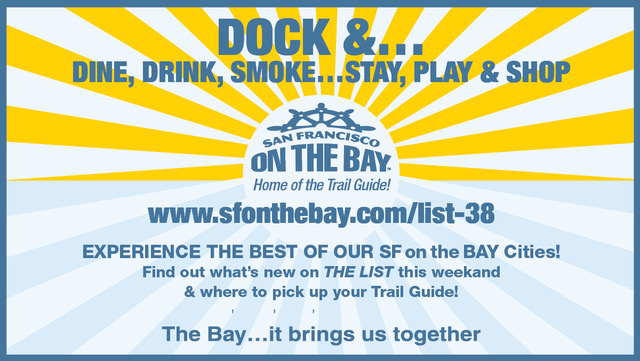
The Campaign to Reinstate Paralympic Sailing for L.A. 2028
After the Rio Olympics and Paralympics of 2016, the International Olympic Committee dropped sailing from Paralympic competition. This was a huge disappointment to Para sailors locally and worldwide, including Ryan Porteous of San Diego, who competed for a fifth-place finish in the Scud 18 at Rio. World Sailing was unable to get Paralympic sailing reinstated into the Paris 2024 Games, and, in fall 2021, kick-started its efforts to get them reinstated for the 2028 Paralympic Games in Los Angeles.
On Friday, March 25, Para sailors Ryan Porteous, Cristina Rubke and Jim Thweatt joined a press conference at St. Francis Yacht Club with the executive director of US Sailing, Alan Ostfield; senior VP of US Sailing Programs and Services Andrew Clouston; world kiteboarding champion and Rolex Yachtswoman of the Year Daniela Moroz; and Marcus Spillane, board member of World Sailing (via Zoom) to continue the reinstatement campaign. Ryan, Christina and Jim are all active California Para sailors who have benefited from and supported programs such as BAADS (Bay Area Association of Disabled Sailors), located at South Beach since 1991. BAADS is one of 80 Para sailing programs nationwide.
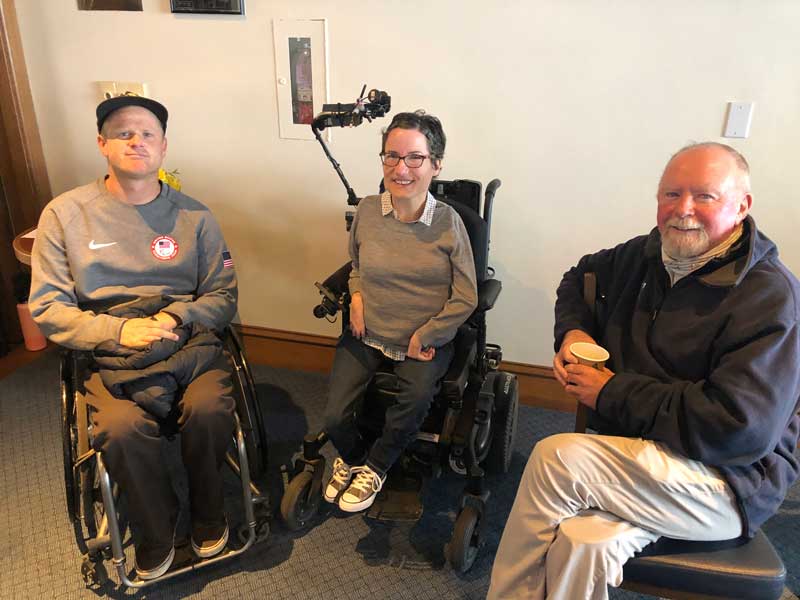
World Sailing is focusing on increasing worldwide participation to 45 nations on 6 continents, increasing youth participation (below the age of 30) to 20% of total athletes, and growing the number of female participants to 30% and, ultimately, to achieve gender parity. World Sailing has also launched the “Back the Bid” #SailtoLA social media campaign, supported by renowned global sailors, leading figures in the sport, and the world’s Para sailors.
Ryan Porteous, from San Diego, shared his story, from being a competitive sailor at Mission Bay Yacht Club to having a freak accident, slipping on a dock and breaking his neck. Ryan discussed his path from there. “I was 18 and had just gone off to college, and I went from having the most independence I’d ever had to needing help doing the simplest of tasks. I spent three months in the hospital post-injury, and it was really tough. I was asking a lot of questions on what the rest of my life was going to look like [after] becoming paralyzed. And one of the things that was a bright light was the possibility of sport, especially sailing, to get me out of my wheelchair and go do something that, most importantly, enabled me to have fun again.
“While I was still in the hospital post-injury, I was doing research on the Paralympics. I had heard of it beforehand but never really looked into it. I saw that there was sailing, and I was like, ‘Whoa — this looks awesome. I want to do that!’ So I was calling up friends and saying, ‘Hey, get me back on the boat; just throw me on and let’s get sailing again.’ It was a really cool experience to have friends there to get me back on the water. From there, I contacted the US Sailing Team and asked them, ‘How do I make this happen? How do I make the US team? How do I try to go to the Paralympics?’”
Lawyer and Bay Area resident Cristina Rubke is a frequent sailor at BAADS in South Beach. She explained, “Sailing is really unique. You can adapt it to somebody who has a very significant disability. I can’t use my arms at all, so I use my chin to do everything. I sail my Hansa Liberty with a joystick that is tied up under my chin and has two switches that connect to the sails — right and left for rudder control and up/down to bring the sails in and out. And the two switches control the main and the jib.”
Cristina doesn’t just sail on her own. “When I sail as part of a team, I have almost exclusively sailed with a sailor out of Florida called Chris Sheppey, who is a blind sailor, very physical and very in shape. He and I are a great team because he can do all the things physically with his arms and legs that I can’t, but I can see everything and I can tell him what’s going on.”
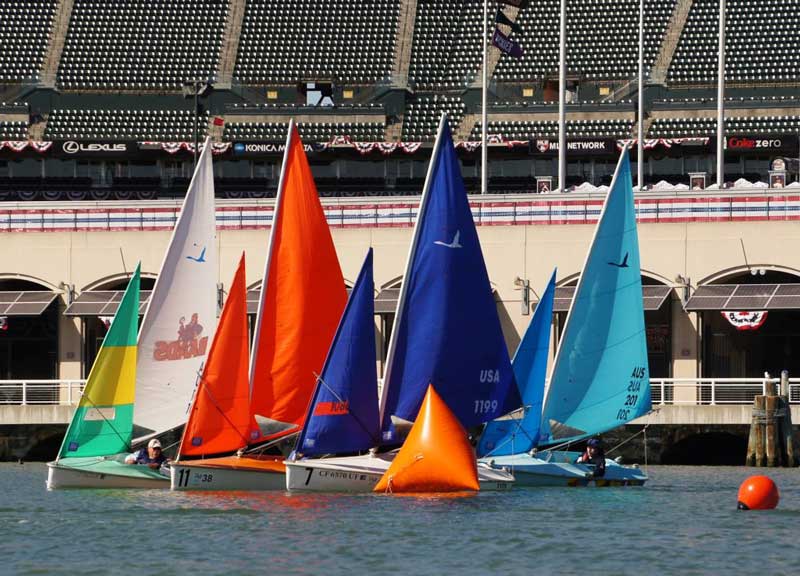
At 17, Jim Thweatt was hit by a car while riding a motorcycle, lost his leg below the knee, and fractured his femur. The first Para sport he raced in was skiing, but after he retired, he turned to sailing and combined his passion for both sports as a Classifier —– someone who determines who is eligible to compete in a Para sport and groups the eligible athletes in sport classes according to their activity limitation.
“Out of all the Paralympic sports I’ve been involved in, sailing is probably the most inclusive, and I’ve been around a lot of them at the Olympic and Paralympic level. The reality is that you can take somebody like Cristina, or someone like me, and put them in a classification protocol, where 1 is graded as the most severely disabled, to a 7, which is the most physically able.”
As the popularity of the Paralympic calling continues to build around the globe, World Sailing is seeking the reinstatement of Para sailing at the Paralympic Games in time for the Los Angeles 2028 Paralympic Games. Sailing expands the horizons and sense of freedom for all sailors, but these Para sailors were on hand to double down on that sentiment for how sailing has transformed the joy in their lives. Sailing remains one of the most adaptable and freeing activities available to anyone. We hope to be watching the US Paralympic sailors competing in L.A. in 2028, and up and down the West Coast between now and then. To learn more, visit BAADS on San Francisco Bay or US Sailing’s Adaptive Sailing resource page.
A Beer Can Series Origin Story
Richmond Yacht Club’s Beer Can Races started back in 1990. The progenitor was Harris Lavine. “The Sailing Advisory Committee had been discussing ways to have more activity and use of the club during the week,” explains Paula Lavine. “These races became popular enough that Rob Moore from Latitude 38 called to ask Harris if he would send him the race results so he could publish them with the other Beer Can races. Harris explained in great detail how the races were run and how the trophies were awarded. After that, Rob understood the reason results were not reported.”
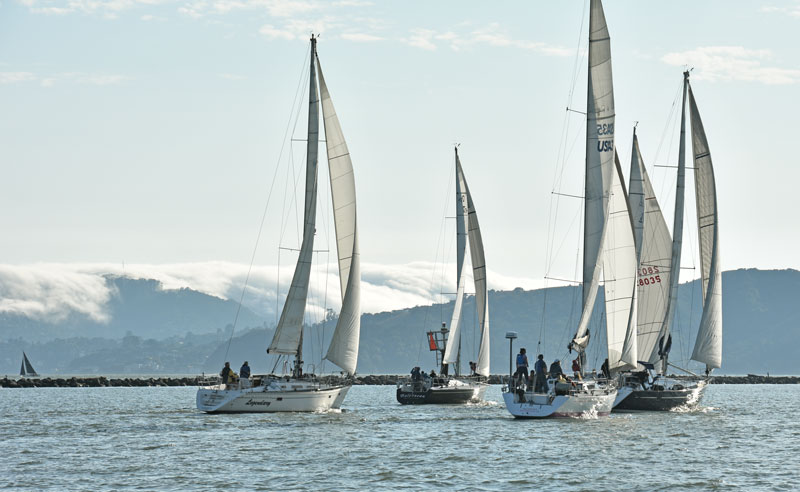
This is the 32nd year of careening carousing crashing around the cans. One bit of calculated randomness has not changed: “Trophy recipients will be entirely at the discretion of the Race Committee.” The original sailing instructions also stated, “Trophies must be consumed on the premises and shared.”
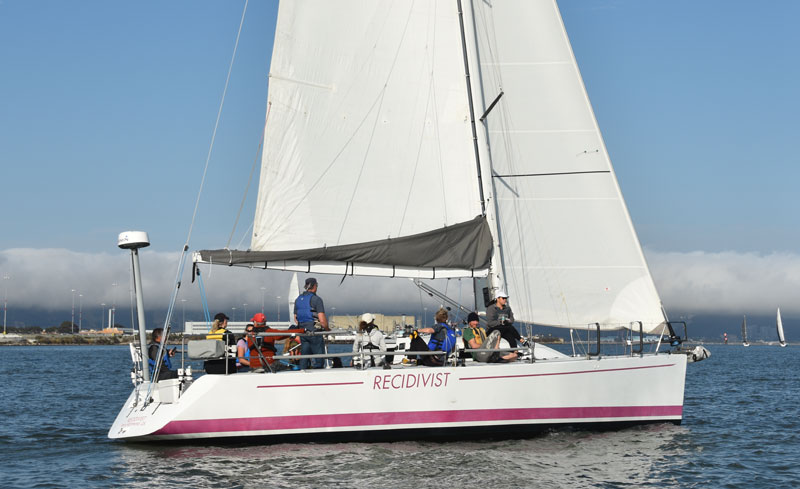
“After a while, we got tired of trying to find a [race committee] boat,” continues Paula, “and so Harris came to a board meeting for a request to build a platform on the breakwater. He said if it doesn’t work out, just call it ‘Harris’ Folly’. The board voted to approve money for Dick Horn and his crew to build the platform as one of their summer maintenance projects.” The platform proved a success. RYC still uses it to run Beer Can races. The Yacht Racing Association and the Singlehanded Sailing Society also use it to finish some of their races.
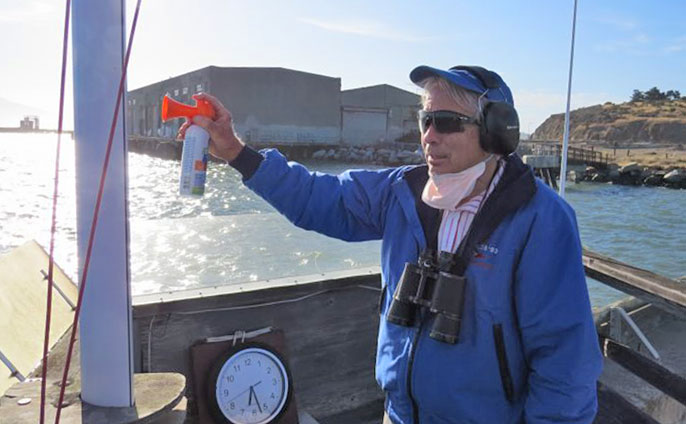
“Harris Lavine asked me in 1998, I believe, to take over running the Beer Can races,” writes Eric Arens. “At the time, the Beer Cans were held on the first and third Wednesdays of a few months around June. Twelve bottles of wine were given out after each race. Harris had gotten someone to run each month, and I had done so one or two or a few times. He then asked me to run the whole thing the next year, which I think was 1999. I agreed to do so. A problem was finding someone to run it each month, so I just did it myself. I got a few flags on staffs, the wind-up clock and a shotgun, and carried them out to the platform. The club did not have a race committee room then, and equipment just lay around in the big room downstairs.
“I had seen that the big room had shotguns and shells lying around and kids running around in it. Though not normally one to impose constraints on activity, I had gone out and bought a gun cabinet and had locked the guns and ammo in it. This was before one had to get approval to do anything. I just did it and got repaid by the office manager. I had not bolted the gun cabinet to a wall, and when the clubhouse was broken into by thieves a few years later they took the whole cabinet with guns and ammo. One of the guns was a pump action shotgun that had the inscription ‘Fire the @#%*^& gun. — Eric Arens.’ This gun was a present from the International 14 fleet to RYC for running the International 14 World Championship in 1997. But that is another story.”
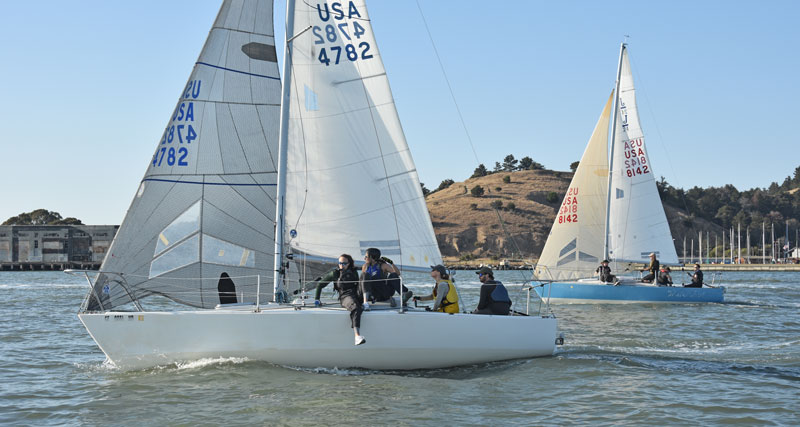
“A problem I had was how to score boats,” continues Eric. “There were four starts as there are now, with little and big boats with and without spinnakers. I did not have the boats’ PHRF ratings and did not have time to figure anything out anyway, so I guessed the results. The guesses seemed to be popular, except when I got booed. I then devised the Dynamic Handicap System, which is based on all the handicaps used since the British Parliament Act of 1694. The Seawanhaka Rule, the International Rule and the Cruising Club of America Rule are of particular importance.”
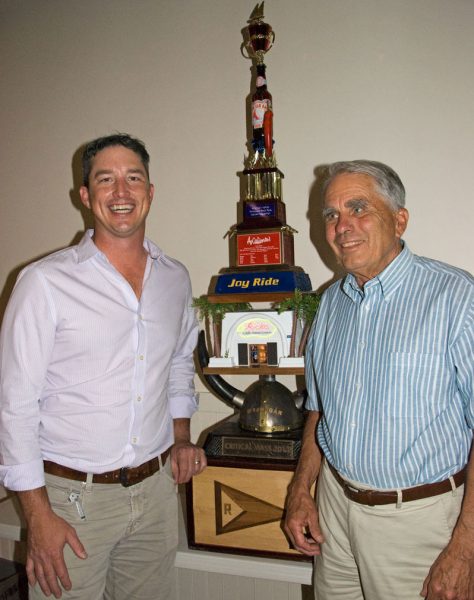
“The Beer Cans had races on the fourth Wednesdays for years before the BOD moved its meeting. Some of the board members would complain jokingly that they had trouble having a meeting with all the laughter coming down from upstairs. Sometimes they even recessed their meeting so they could come to the Beer Can dinner.
“More and more boats came to the races. To cut down on the number of boats each evening, races were held every Wednesday to spread the boats out. The plan did not work, and more boats came each evening. The beginning and end dates of the season have also been extended as far as into March and into October. But finishing boats in the dark when they cannot be seen brought back the old scoring problem.”
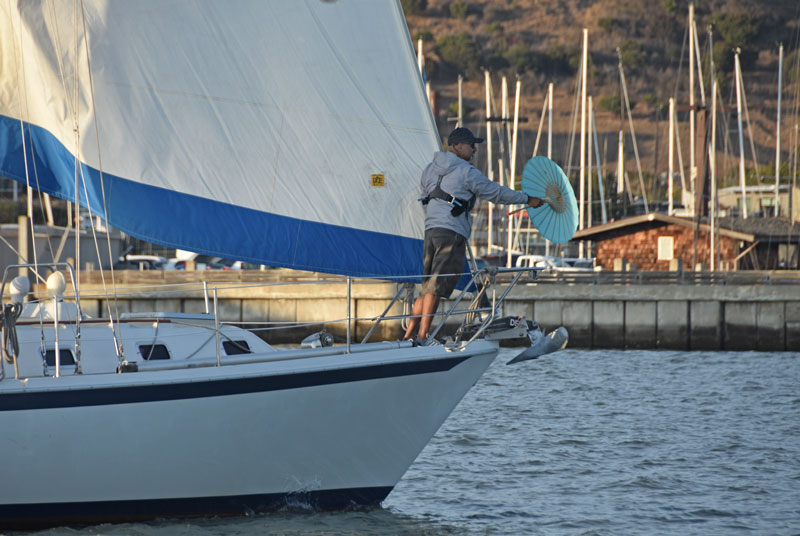
This particular Beer Can series has never had an entry fee. The next season begins this week, on April 6, and will continue every Wednesday through September 28. You’ll find Beer Can race series all over the state. Check out a whole bunch of them in Northern California on our April Calendar page.
KKMI Seeking Handyman/Facility Manager for Richmond
- Wings & Foils
- Racing
- International Racing
- Current News
- Events
- West Coast Sailing
- Commentary
- Northern California Racing
More Than 50-Knot Racing at SailGP
Mubadala United States Sail Grand Prix San Francisco (aka SailGP) on March 26-27 served up one of the most action-packed weekends on the Bay in a couple of years. Mother Nature’s fickle ways were challenging on the final day, but the “Powered-by-Nature” event made the best of everything San Francisco Bay had to offer. We enjoyed two days on the waterfront with the sellout crowd that visited from all over the country to view the Season 2 finale. We want to call attention to other highlights beyond the clashing of the gladiators in the main event.
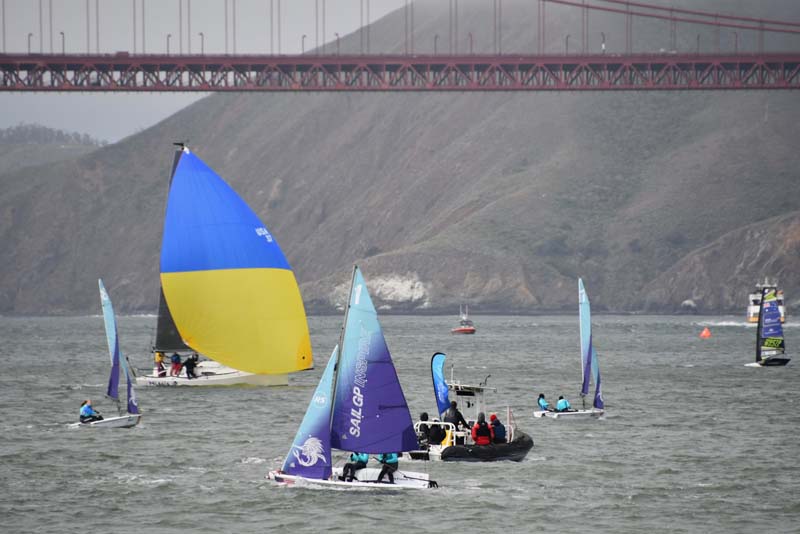
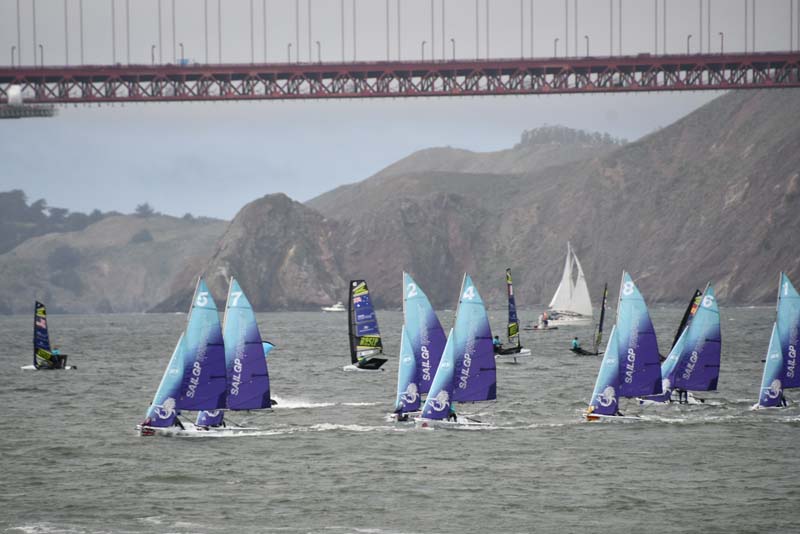
SailGP created the main stage for much more than the F50 foiling cats. We applaud their efforts to showcase a much broader picture of sailing than is often seen at grand prix events, with youth and mixed-gender sailing on display in a wide variety of craft. This included youth regattas in the SailGP fleet of RS Fevas and the Waszp Inspire initiative, which featured competitors from around the world who earned their spot by winning events in their home countries. Wing foiling in front of the grandstands put the newest foiling discipline on display in front of the crowds. If F50 sailing looked completely otherworldly to prospective sailors, the RS Fevas, Waszps and wings presented much more affordable and comprehensible options for the public.
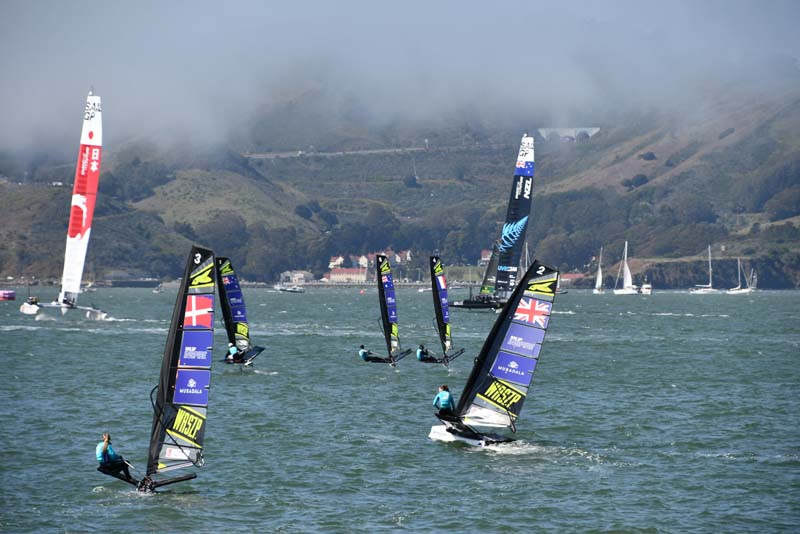
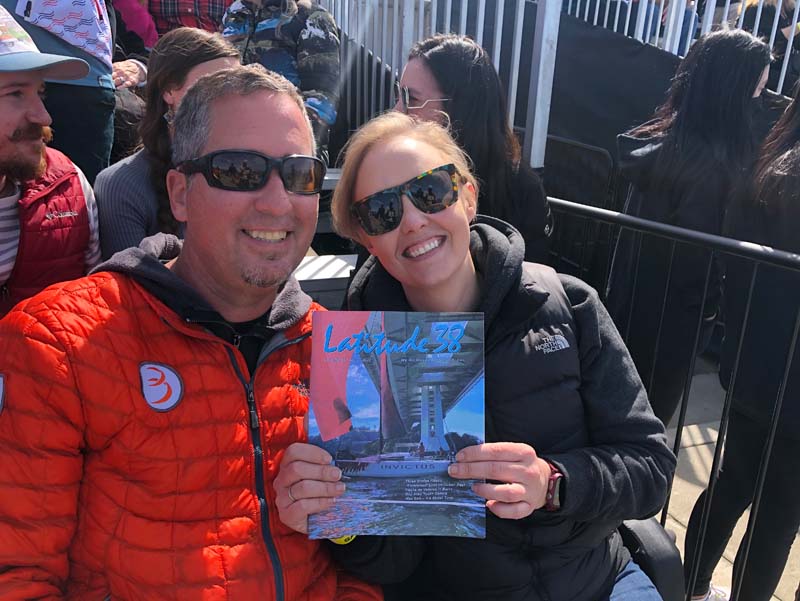
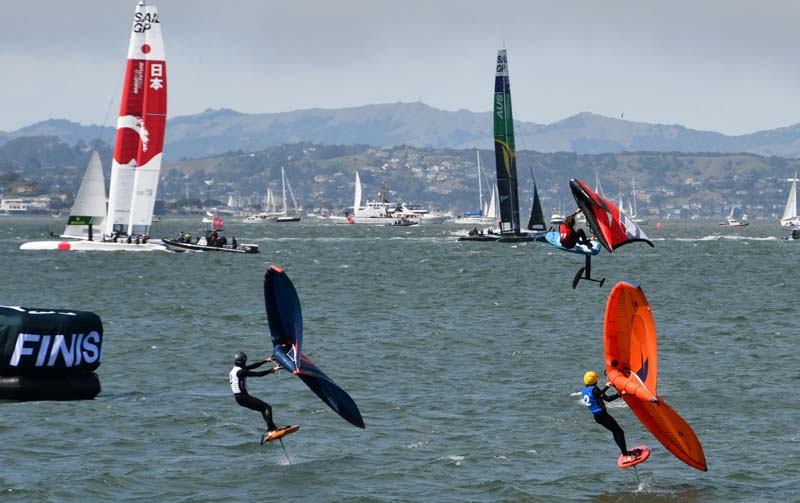
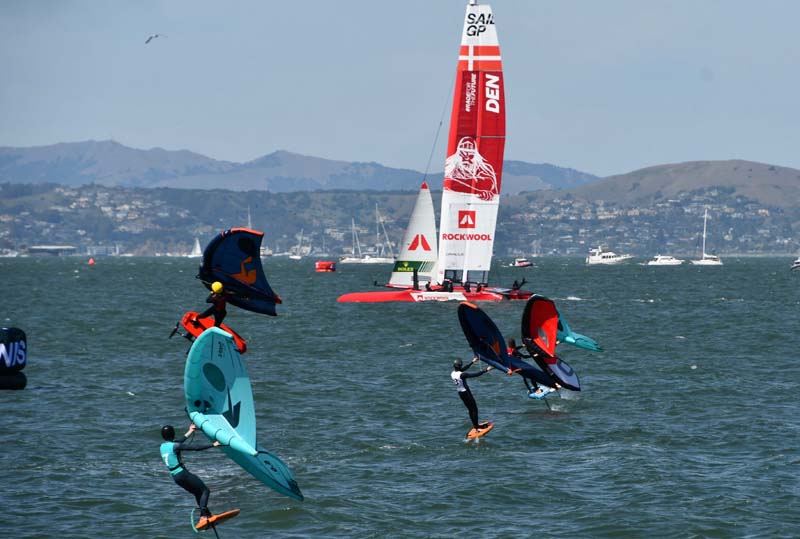
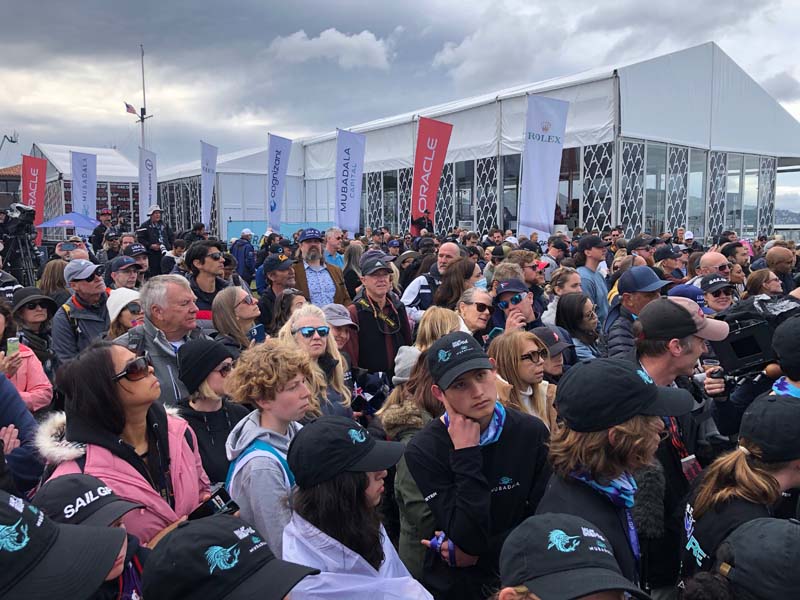
We also have to hand it to Russell Coutts and SailGP for creating the Impact League. To suggest you’re going to create an event of this scale that will be climate-positive is to immediately invite critique and scrutiny of everything you do. Despite those risks, we commend them for taking the plunge and challenging the teams (and all of us) to do better for the planet. They created a mission statement: “A world-first initiative to make sustainability essential to the fabric of sport and to accelerate the transition to clean energy.” They backed it up with a scoring system and trophy to be awarded to the team that leads a point system for social and environmental sustainability.
It’s not a sideshow. The winners, Team New Zealand, occupied the same stage as the SailGP winners, Team Australia. Dr. Sylvia Earle presented the trophy to Peter Burling and Team New Zealand. Dr. Earle commended their achievement while adding that it was the whale, which had temporarily halted Sunday’s racing, that won the day. It gave us all a moment to pause and give recognition to nature in the midst of the grand finale.
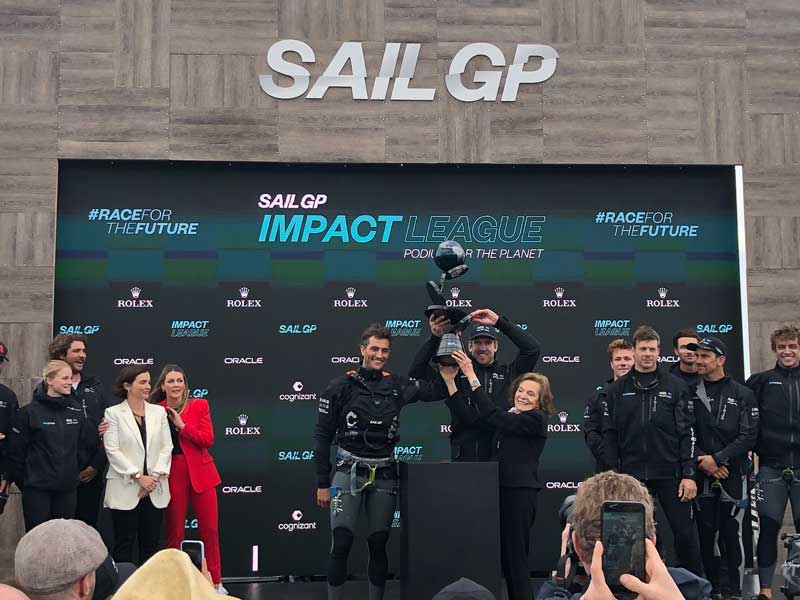
There were a lot of fans in the stands, a lot of boats on the Bay, and a lot of smiling spectators who were inspired by the miraculous sailing resource that serves as the centerpoint of the Bay Area. Fifty-knot foiling F50s created a spectacle, but there was so much more of sailing on display that shouldn’t be overlooked. We can thank SailGP for thinking outside the box to elevate sustainability, inclusivity, and a more comprehensive view of sailing in the public eye.
San Francisco Webinar on the Future of Treasure Island
For sailors interested in the future of Treasure Island, there is a free webinar on Thursday, April 7, 2022, from 12:30 p.m. to 1:30 p.m.
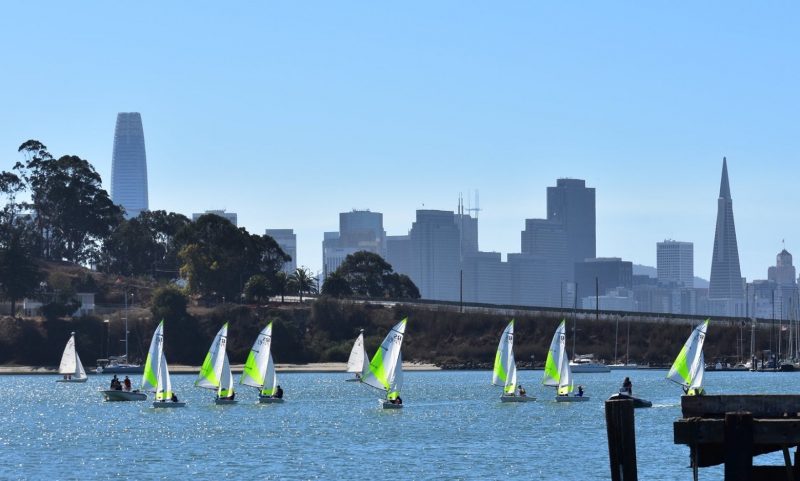
The event is being held by SPUR (the nonprofit Bay Area public policy organization), with the invitation reading, “Treasure Island and Yerba Buena Island, situated in the heart of the San Francisco Bay, share a long history. From providing an anchor for the Bay Bridge to hosting the Golden Gate International Exposition and, subsequently, the US Navy, the islands have seen considerable change over the last century. But both are now undergoing a truly radical evolution. Geotechnical work, new streets, utilities and infrastructure are being completed, new freeway ramps and a new ferry landing are in place, and new housing, both market-rate and affordable, will be ready for occupancy in 2022. Join us to hear about Treasure Island’s past, the plan for its future and a progress update on the grand vision that San Francisco adopted over a decade ago.”
Guests include:
V. Fei Tsen / Treasure Island Development Authority
Bob Beck / Treasure Island Development Authority
Chris Meany / Wilson Meany and Treasure Island Community Development
Kevin Conger / Principal, CMG Landscape Architects
Click here to register for the free event.
If you’re interested in the future of the Bay Area, you might also want to read Friday’s April Fool’s story about the City of San Francisco’s proposed “Sailing Toll.”

 Visit http://www.kkmi.com/jobs to learn more.
Visit http://www.kkmi.com/jobs to learn more.